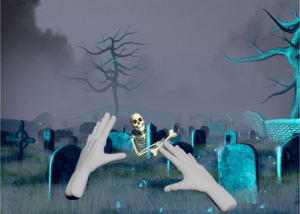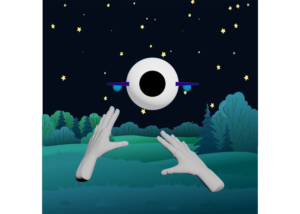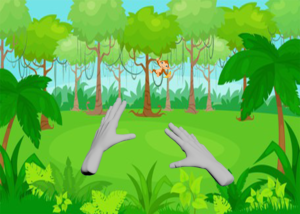Prototype #3: AIMM after Dark
At the AIMM after dark presentation, I created images of the three different levels and played the music in the background to receive feedback from the people in attendance. The first one was a spaceship themed level that featured an egg shaped spaceship that lands in the middle of the night and begins to fire eggs out of a canon at the user. The second theme was much darker situated in a graveyard with a skeleton that pops up from behind tombstones and throws bones at the user. The third was jungle themed and featured a monkey that throws bananas at the user.



